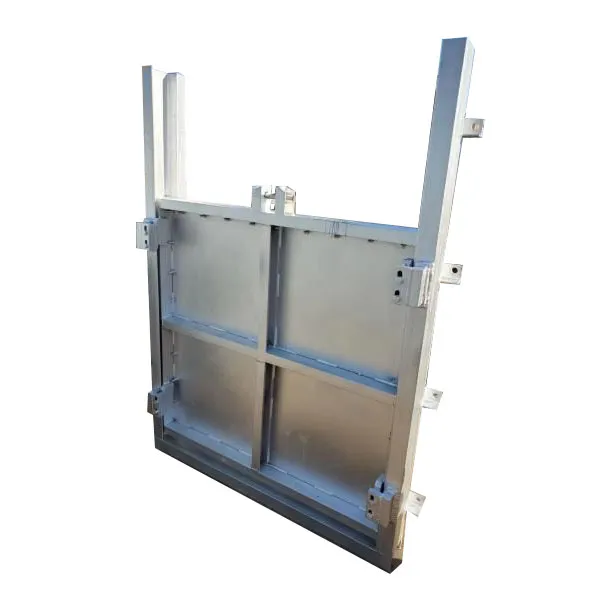What does a penstock gate do?
2024-11-08
A penstock gate is a device used to control the flow of water in various water management systems, such as dams, hydroelectric plants, irrigation systems, and wastewater treatment facilities. It acts as a gate or barrier within a penstock (a large pipe or sluice) that directs water flow, allowing operators to regulate or shut off the passage of water when needed. Here’s how it functions and where it’s commonly used:
Functions of a Penstock Gate
1. Flow Control
- The primary purpose of a penstock gate is to control the volume of water flowing through a channel or pipe. By raising or lowering the gate, operators can increase, decrease, or completely stop the flow of water.
2. Water Level Management
- Penstock gates help manage water levels in reservoirs, rivers, and storage tanks, which is crucial for flood control, irrigation, and environmental management.
3. Pressure Regulation
- In hydroelectric power plants, controlling water flow through the penstock gate helps regulate the pressure exerted on turbines, ensuring optimal energy generation while protecting equipment from damage.
4. Maintenance and Isolation
- Penstock gates can fully close to isolate sections of a system, making it easier to perform maintenance or repairs without draining the entire system.

How Penstock Gates Work
Penstock gates are typically operated by manual or automated mechanisms:
- Manual Operation: In simpler systems, gates can be raised or lowered with a hand wheel or crank.
- Automated Operation: Many modern penstock gates use electric or hydraulic actuators for remote control, allowing for quick adjustments and integration with automated water management systems.
Common Applications of Penstock Gates
- Hydroelectric Dams: Control water flow to turbines, allowing precise regulation of energy production.
- Flood Control: Help manage water levels in flood-prone areas by releasing or retaining water.
- Irrigation Systems: Control the amount of water distributed to agricultural fields.
- Wastewater Treatment: Manage the flow of water through various stages of treatment or into holding tanks.
Types of Penstock Gates
- Slide Gates: Vertical gates that slide up or down to adjust water flow.
- Radial or Tainter Gates: Curved gates often used in dams, operated by pivoting to regulate flow.
- Flap Gates: Used in drainage systems, allowing water to flow in one direction and preventing backflow.
Conclusion
A penstock gate is essential for managing and directing water flow in large-scale water management and hydroelectric systems. By regulating water levels, flow rates, and pressure, penstock gates ensure safe, efficient, and controlled water usage across various applications.


